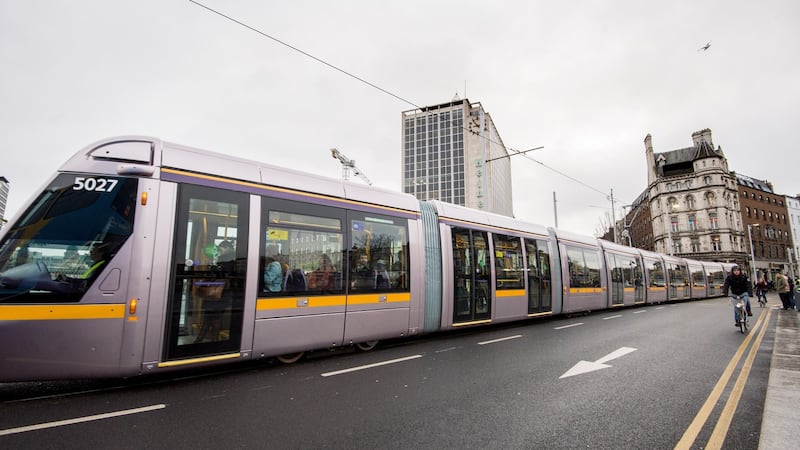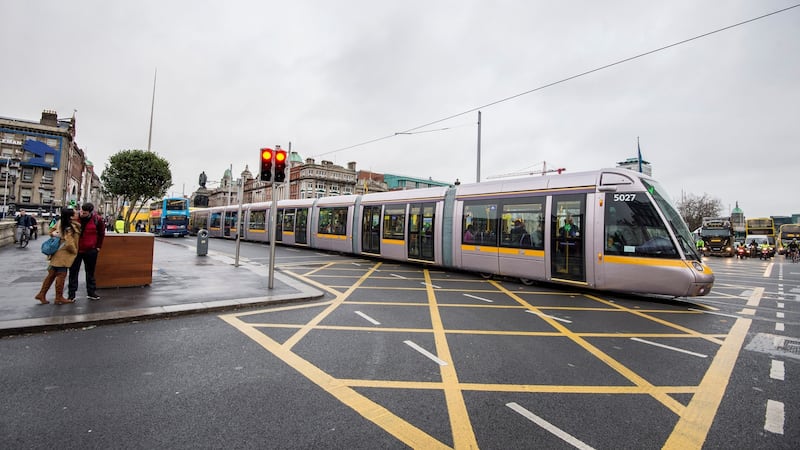Transport Infrastructure Ireland is reviewing signalling arrangements in Dublin city centre following difficulties with the city’s new 55-metre Luas trams.
Spokesman for TII Tom Manning said on Thursday night the organisation is engaging with Dublin City Council to review the signalling arrangements.
Chairman of Dublin City Council’s strategic transport committee Ciarán Cuffe said it may also be necessary to ban taxis from parts of Dublin’s cross city Luas routes at peak times to ensure the new trams do not block key junctions. He said buses carried too big a share of the travelling public to face a similar ban.


Mr Cuffe was speaking after a new 55-metre Luas tram was forced to stop on the 45-metre O’Connell Bridge on Thursday. The tram stopped with its rear carriage protruding across a yellow box junction between O’Connell Bridge and the south quays.
The incident, which happened in the morning rush, was cleared quickly, but followed severe congestion in the College Green area since the introduction of cross city trams in December.
In a bid to reduce congestion in the city centre Transdev, the Luas operator, has reduced frequencies on the Green Line during the morning peak period, but this has resulted in complaints of very crowded conditions and some people being unable to board.
Green Party deputy leader Catherine Martin (Dublin Rathdown) said her constituents who commute had “inundated” her with complaints that “overnight a very reliable service has turned into a service commuters can no longer depend on to get them to work on time”.
On Thursday morning many passengers at stops from Stillorgan onwards were unable to board the 7.47am departure from Bride’s Glen which reached Stillorgan at 8.09am. There were similar scenes at Kilmacud, Balally, Dundrum and Windy Arbour before the tram was stopped for 10 minutes at Milltown due to a medical emergency with a tram at Harcourt Stop.
The tram glided without stopping through the problematical College Green area, but buses and taxis were backed up as far as the eye could see in the direction of Pearse Street.
Dublin City Council management has spoken of the possibility of banning east-west travelling buses from the College Green-Dame Street axis but Mr Cuffe said the city should be careful about banning buses which, he said, carried 40 percent of public transport passengers in the area.
“If there is not enough space in narrow streets there will be incidents and we may have to ban taxis,” he said. “If we are to allow them both [trams and buses] to run smoothly it may be that we have to ban taxis from certain areas at least during specific hours,” he added.
Transport authorities in Dublin will now meet next week to consider how to tackle the problem. The City Council and the National Transport Authority will hold discussions, but it is understood that the Luas operator Transdev has not been invited to attend.
The city council was asked, but did not provide a comment on the situation. Dick Brady, assistant chief executive of the council recently told councillors there had been “widespread delays” and “numerous complaints” following the introduction of the Luas Cross City route last December.
Mr Brady told the council’s monthly meeting that despite Dublin Bus reducing its fleet by 20 per cent during the morning peak, bus journey times are still greater than they were before the new Luas was introduced.
Mr Brady said the council and the NTA are “monitoring the situation” and will meet on Tuesday to consider if “more interventions are needed”.









